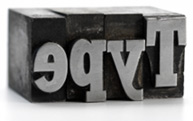 Moveable Type
Moveable Type
Moveable metal type was originally invented in Korea in the 13th century but was unknown in Europe until it was re-invented by Johannes Gutenberg in about 1439. The letters can be rearranged to make any word. If you look closely at this photo (above), you can see that each letter is separate. You also can't help but notice that it's backwards, just like a rubber stamp, so that the printed image will be the right way round.
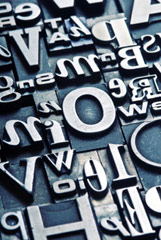 Type comes in many sizes and styles, called type faces.
Type comes in many sizes and styles, called type faces.
In computing, type faces are called fonts. Font is the American spelling of fount which, strictly speaking, is a collection of type in the same size and the same face – like you'd find in a type case.
It's usually made from type metal (an unique alloy) but wood works well for larger sizes, like the wood letter below left.
It's kept in a type case with compartments for all the different letters, numbers, and punctuation. Pictured below right is a close up showing a few of these compartments.
Type cases are drawers that can be slotted into a chest called a random when they're not being used.
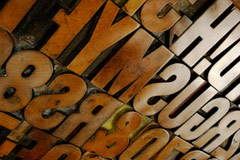
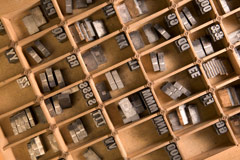
Most type cases you'll see in use have compartments for capitals at one end and lowercase at the other but, traditionally, they were stored in separate cases. Lowercase letters are used more often than capitals so it was sensible to keep that case close to hand, and arrange the case for the capitals above and behind. That's where the terms uppercase and lowercase originate.
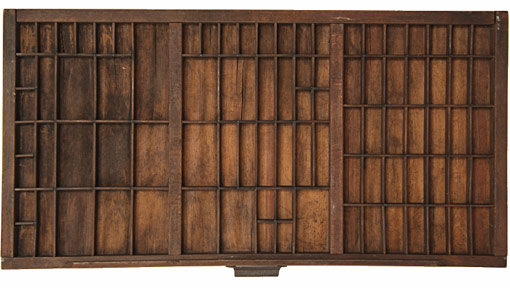
This empty type case has compartments for uppercase characters (capitals) on the right, with room for the lowercase in the middle and on the left. Usually, numbers and most of the punctuation go around the top and left hand edge.
You Might Also Like...
- NEW: 'Other Voices of the British Isles' £16.00
- Find a Letterpress Museum Near You
- Links to Other Presses
